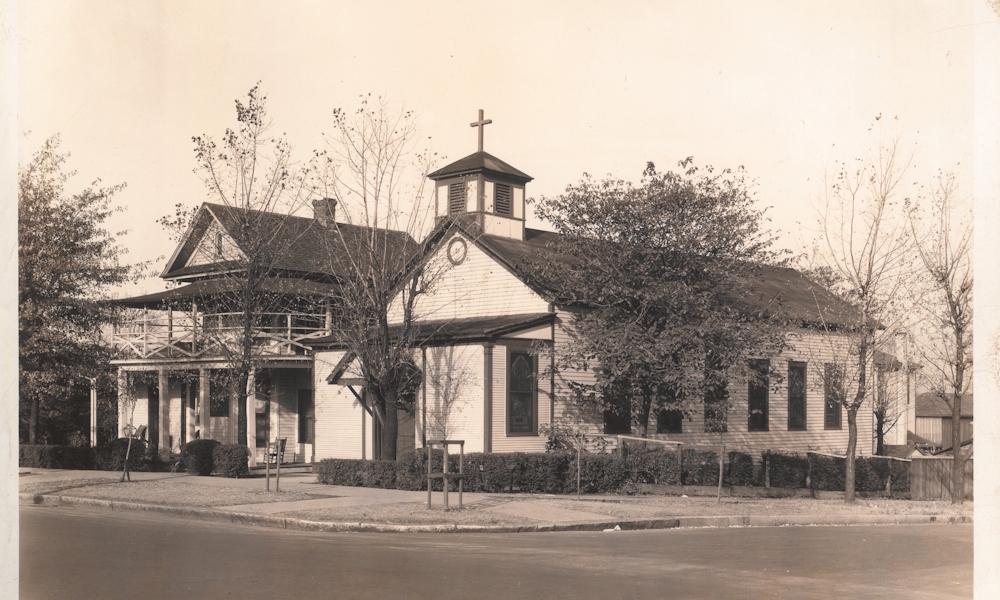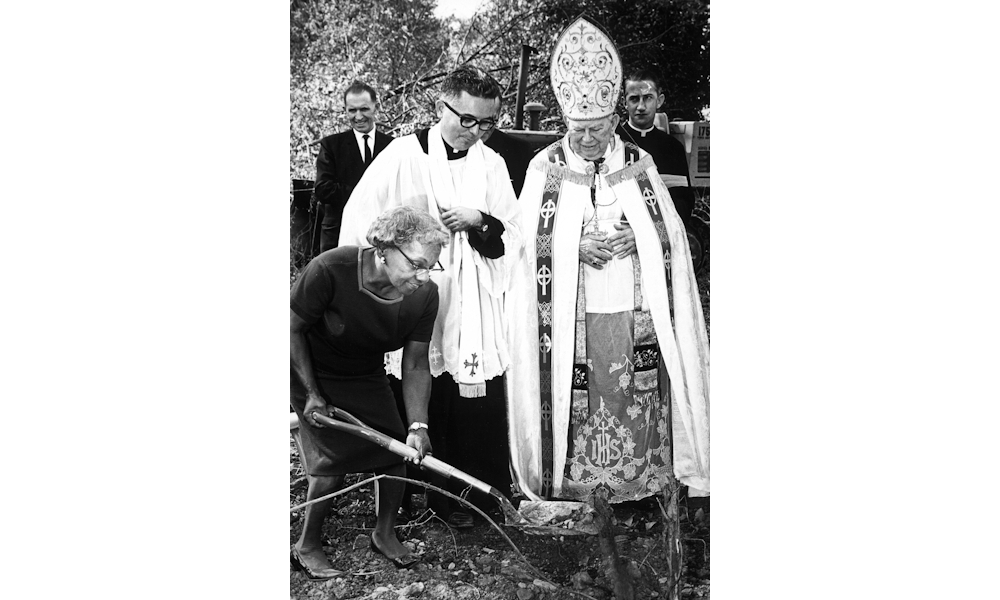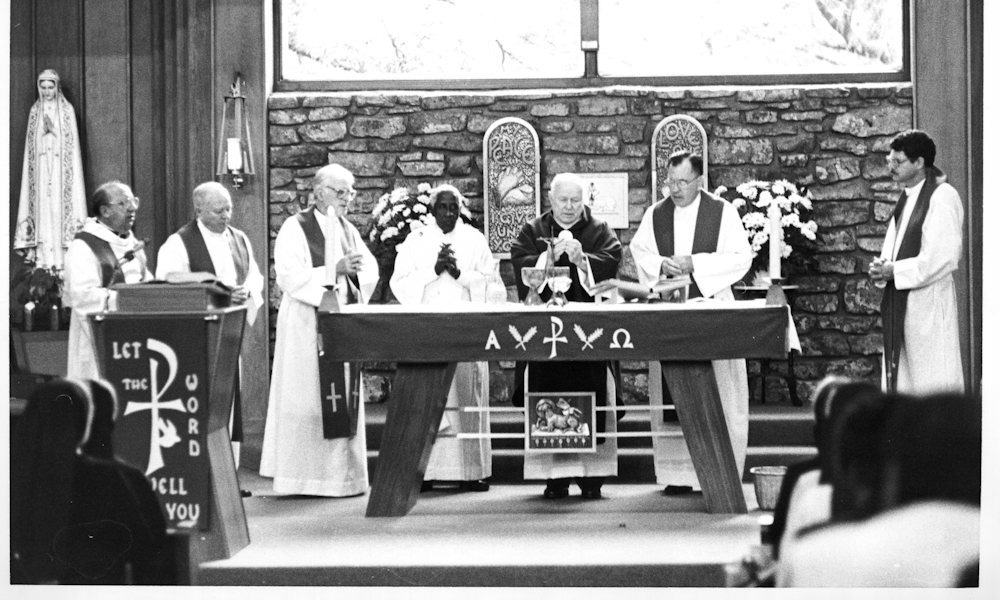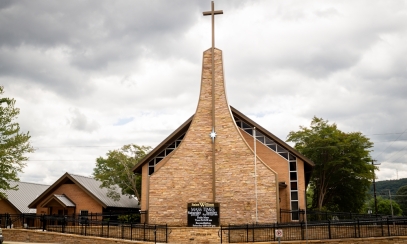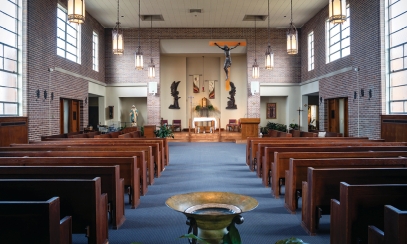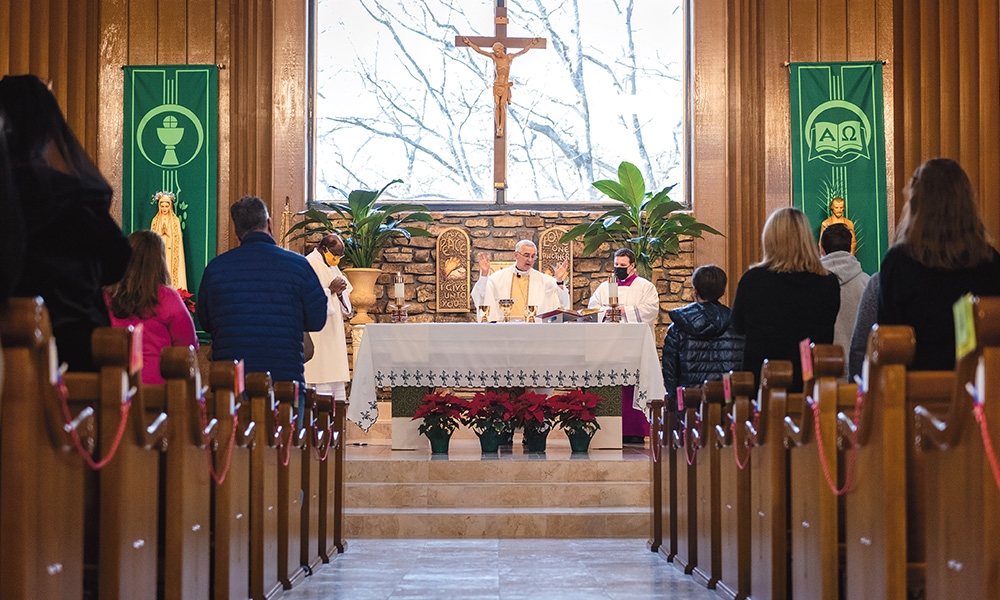
Our Lady of Fatima Catholic Parish
This year marks 120 years since the ministry of Our Lady of Fatima Catholic Parish, formerly Our Lady of the Immaculate Conception, began. Initially, a school opened on March 13, 1905, to serve the black community of Birmingham. Only a few months later, Bishop Edward Allen, then Fifth Bishop of Mobile, appointed a Josephite priest, Father Francis J. Tobin, to establish Immaculate Conception Parish. The religious order, also known as the Society of St. Joseph of the Sacred Heart, was chosen for their dedicated service to black Catholic communities. Even though Father Tobin was only able to locate five Catholics amongst the local black population, the priest stayed true to the Gospel passage, “For where two or three gather in My name, there am I with them.” (Mt 18:20) He held the first Mass in a small four-bedroom house, with a packing crate for an altar.
This year marks 120 years since the ministry of Our Lady of Fatima Catholic Parish, formerly Our Lady of the Immaculate Conception, began. Initially, a school opened on March 13, 1905, to serve the black community of Birmingham. Only a few months later, Bishop Edward Allen, then Fifth Bishop of Mobile, appointed a Josephite priest, Father Francis J. Tobin, to establish Immaculate Conception Parish. The religious order, also known as the Society of St. Joseph of the Sacred Heart, was chosen for their dedicated service to black Catholic communities. Even though Father Tobin was only able to locate five Catholics amongst the local black population, the priest stayed true to the Gospel passage, “For where two or three gather in My name, there am I with them.” (Mt 18:20) He held the first Mass in a small four-bedroom house, with a packing crate for an altar.
Like the Josephites, the Sisters of the Blessed Sacrament ministered to the black community. The congregation’s foundress, St. Katharine Drexel, heard of the efforts in Birmingham and sent funds to help purchase property and construct buildings. Thanks in part to the saint’s support, the first church, rectory, and school, located on Avenue F (Sixth Avenue) and 17th Street, South, became a reality.
With the parish’s new pastor, Josephite Father J. Murphy, at the helm, the school’s first year saw an enrollment of 80 students and the Sisters of Mercy staffing the school. Surprisingly, out of the entire student body, only one child was Catholic, but as evidenced by Bishop Allen confirming seven people in one year, four of whom were converts, the school was teaching truth beyond that of academics.
Over the course of the next three decades, the parish saw a great deal of change. Josephite Fathers Narcisse Denis, Charles E. Reilly, Patrick Walsh, Thomas J. Brophy, and Joseph M. Schmutz, respectively, would serve as pastor. In 1925, the Sisters of Mercy withdrew from the school, opening the door for the Daughters of Charity, who instructed the students over the next 12 years.
A new era of the school began in 1937 when the Sisters of Notre Dame came down from Kentucky to teach. The success of the school translated into the creation of a Catholic high school in 1948 under the guidance of the pastor, Josephite Father Edward Lawlor. The new school, Immaculate Conception High School, was dedicated by Bishop Thomas J. Toolen in April of 1950.
In the midst of all the parish’s blessings, another local parish experienced tragedy. In 1949, Our Lady of Sorrows Parish burned, which led to Our Lady of Sorrows relocating to Homewood. The move made it possible for Immaculate Conception to relocate as well. Somehow, the revered Msgr. Fulton Sheen heard of the news. He financed the rebuilding of a church on the old Our Lady of Sorrows property for the use of the Immaculate Conception Parish. The future archbishop, however, made one request: He wanted the parish’s name to be changed to Our Lady of Fatima.
In just 12 short years, the pastor, Josephite Father Paul Downey, was making plans for a new complex. In 1965, Josephite Father Eugene Farrell came to Our Lady of Fatima and carried out Father Downey’s plans. On Nov. 3, 1968, ground was broken on a new church in a new location. The new Our Lady of Fatima Church was opened on Sept. 7, 1969, at 708 First Street, South.
Also in 1969, an Our Lady of Fatima parishioner, Private Bill Terry, was killed serving the country during the Vietnam War. Before his deployment, he stated that if he should die in combat, he wanted to be buried in Elmwood Cemetery. At that time, though, the cemetery only allowed the burial of whites. A suit was filed, and Private Terry was ultimately allowed to rest in the place of his wishes. He was reinterred on Jan. 3, 1970, with Bishop Joseph Vath, Birmingham’s first bishop, presiding over the Requiem Mass. Following the Mass, the bishop, congregation, and many from the community, including other faith leaders, marched in procession to the cemetery.
One month later, Bishop Vath dedicated the new church building.
In 1978, Josephite Father John Crotty was appointed pastor and, under his leadership, the church debt was retired. He was succeeded by Josephite Fathers Henry E. Dickson and John O’Rourke. The next pastor, Josephite Father Paul Oberg, arrived in 1997 and would go on to be the parish’s longest-serving leader. Under his care, the parish built a Parish Life Center, welcomed the Sisters of the Blessed Sacrament back to the school, bid farewell to the Sisters of Notre Dame after 64 years of service, and marked the parish’s 100th anniversary.
In 2012, Father Oberg was reassigned and Josephite Father Peter Weiss became pastor, followed by Josephite Father Godwin Ani in 2014. In 2022, the parish welcomed their first pastor not to belong to the Josephite Order, Father Linus Akpan. The priest’s temporary assignment ended in 2025 when Josephite Father Kenneth Keke was appointed to the 120-year-old parish.
As the parish marked its notable anniversary with a Mass of Thanksgiving on Oct. 12 celebrated by Bishop Raica, the faithful stood as a testament to the anniversary's theme: “We are still here!

